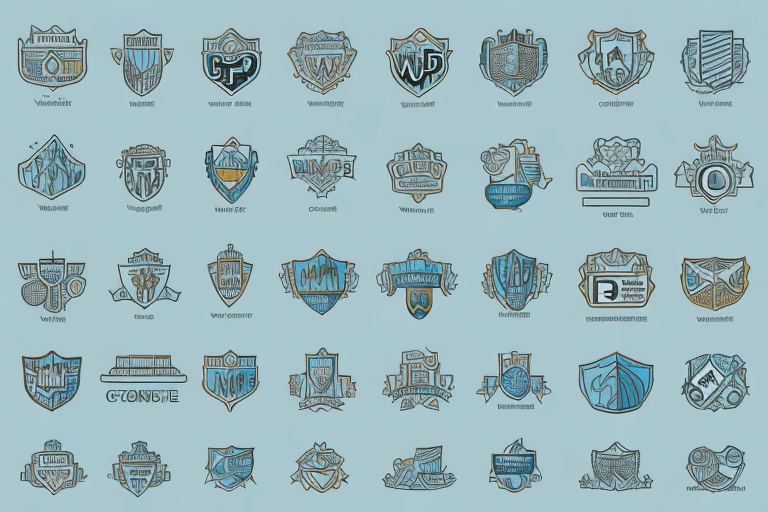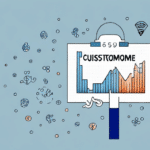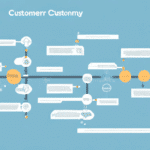Using an Icon to Improve Customer Retention
In today's competitive business environment, customer retention is crucial for any brand that wants to succeed. With an abundance of options available to consumers, businesses that fail to retain their customers risk losing them to competitors. Strategically using an icon can enhance customer retention by boosting brand recognition, building trust, and simplifying communication. This article delves into the various aspects of leveraging icons for customer retention.
1. The Importance of Customer Retention
Why Customer Retention Matters
Customer retention involves keeping existing customers loyal to your brand. It is both more cost-effective and profitable to retain customers than to acquire new ones. According to a study by Bain & Company, increasing customer retention rates by as little as 5% can boost profits by up to 95%. Loyal customers not only spend more but also refer others, expanding your customer base organically.
Key Statistics on Customer Retention
- Profitability: A 5% increase in retention can lead to a 25-95% increase in profits.
- Customer Lifetime Value: Retained customers have a higher lifetime value compared to new customers.
- Referral Rates: Loyal customers are more likely to recommend your brand to others.
2. The Psychology Behind Icons
Visual Communication Power
Humans are inherently visual creatures, often responding more positively to visual cues than textual information. Icons and symbols can communicate complex ideas and emotions swiftly, capturing attention and fostering strong associations. Their simplicity and memorability make them ideal for enhancing brand recognition.
Cultural and Contextual Considerations
Icons can carry different meanings across various cultures and contexts. For example, a thumbs up gesture is positive in Western cultures but may be offensive in parts of the Middle East. It's essential to consider cultural nuances to ensure icons are universally understood and resonate with your target audience.
3. Selecting the Perfect Icon for Your Brand
Aligning with Brand Identity
Your icon should mirror your brand's identity and values, resonating with your target audience. Consider the emotions and associations you want your brand to evoke and choose an icon that conveys those sentiments effectively.
Scalability and Versatility
An effective icon must remain recognizable and legible across various sizes and mediums, from business cards to social media profiles. Ensure that your icon maintains its clarity and impact whether displayed digitally or in print.
4. Designing an Effective Icon
Simplicity and Clarity
The design of your icon is as critical as its concept. A simple, clear, and visually appealing icon is more likely to be remembered and recognized. Avoid overly complex designs that can become cluttered or confusing at smaller sizes.
Color Psychology
Colors evoke different emotions and associations, influencing how customers perceive your brand. For instance, blue conveys trust and reliability, while red signifies energy and excitement. Choose colors that align with your brand personality and the emotions you wish to evoke.
Testing with Your Audience
Before finalizing your icon, test it with your target audience through surveys or focus groups. Feedback can provide valuable insights into how your icon is perceived and whether it effectively communicates your intended message.
5. Strategic Placement of Icons
Optimal Website Placement
Place your icon prominently on your website, typically in the top left corner for maximum visibility. It should be consistently displayed across all pages to reinforce brand recognition.
Mobile App Considerations
In mobile applications, consider placing the icon in areas that are easily accessible with one hand, such as the bottom corners. This enhances user experience by making navigation intuitive and seamless.
6. Enhancing Trust Through Icons
Building Brand Recognition
Repeated exposure to your icon in various contexts fosters a sense of familiarity and reliability. This consistent branding helps establish credibility and makes your brand more memorable to customers.
Conveying Reliability and Professionalism
Icons can communicate essential information quickly and effectively. For example, a well-designed shopping cart icon on an e-commerce site signals to customers that they can easily add items and proceed to checkout, enhancing the overall user experience.
7. Avoiding Common Mistakes
Using Generic Icons
Avoid generic icons that do not align with your brand or convey a unique message. Generic icons can fail to differentiate your brand from competitors, reducing their effectiveness in customer retention.
Overuse and Clutter
Using too many icons can clutter your design, making it overwhelming and confusing for users. Maintain a balanced approach, using icons purposefully to enhance communication without detracting from the overall aesthetics.
Ensuring Clarity and Size Appropriateness
Icons that are too small or unclear can hinder communication and frustrate users. Ensure that your icons are appropriately sized and maintain clarity across all platforms and devices.
8. Future Trends in Icon Design
Animated and Dynamic Icons
With advancements in technology, animated and dynamic icons are becoming increasingly popular. These icons can create engaging and immersive user experiences, capturing attention and encouraging interaction.
Personalization Through AI
Artificial Intelligence and machine learning are enabling personalized icon experiences. Icons can adapt based on individual user preferences and behaviors, enhancing the overall user experience and fostering deeper customer connections.
Conclusion: The Strategic Advantage of Icons in Customer Retention
Icons play a pivotal role in improving customer retention by boosting brand recognition, building trust, and simplifying communication. A well-chosen and thoughtfully designed icon can establish strong customer associations and loyalty. By selecting the right icon, designing it meticulously, and strategically placing it across all marketing channels, businesses can enhance customer retention rates and achieve sustained success.






















